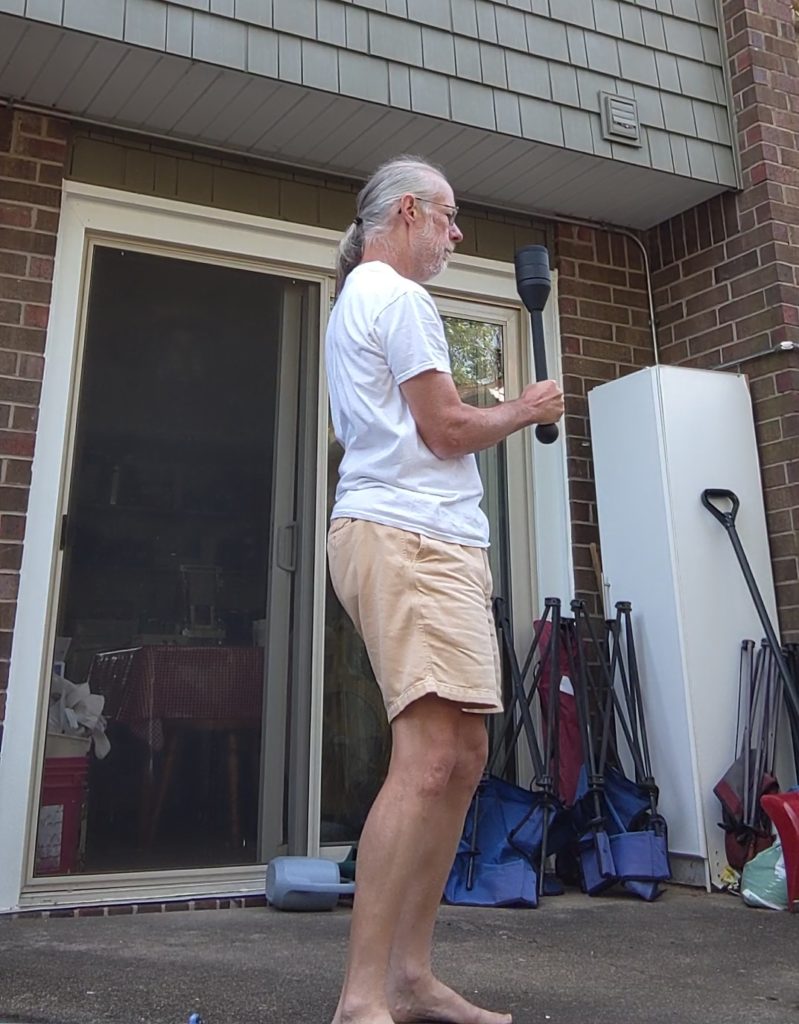If I’m serious about training to get better at everything—and I am—then I need to think seriously about how to fit in, and recover from, all that training. This post is my first cut at documenting some of my early thinking on how I might do that.
A plan to fit in everything needs to start with eliminating having whole days devoted to just one particular kind of exercise: strength days, running days, etc. Instead, most days will have to have at least two (hopefully complimentary) exercise activities.
I had already started work on thinking about the best ways to combine exercise activities in ways that would reinforce one another, based on the ideas of Adam Sinicki (aka The Bioneer). But more recently the work of Mark Wildman has provided what may be the solution: What he calls “the Tetris of training.” (That’s a link to the first of a series of videos where he talks about program design in those terms.)
The basic idea here is that you divide your workout into pieces: Maybe a kettlebell squat piece, or a single-arm club-swinging piece, maybe a running piece, etc. Then structure each piece as a specific block that can be done in a specific amount of time, and organize those those blocks into a sequence to make a workout that can be done in 30, 60, or 90 minutes (including a warmup at the beginning and a cooldown at the end), and lay those workouts out on a weekly timeline, with appropriate rest days.
Another key part of the idea is that each of those pieces should be its own progressive program, running on its own schedule, but arranged with the others so that they’re not all progressing upward at the same rate.

This can (and probably should) get pretty fancy, because there are all kinds of considerations. You want to:
- Cover all the basic movement patterns (walk, run, crawl, lift & carry, climb, throw & catch, etc.)
- Hit all the large muscles in your body (glutes, quads, hamstrings, pecs, lats, traps, etc.)
- Work all the basic directions of movement (Roll, Pitch, Yaw, Heave, Sway, Surge)
- Avoid working the same muscle patterns two days in a row (to allow for recovery)
- Make sure the important muscle patterns get hit at least twice a week
Besides all that stuff, I particularly want to include some “skills” training, where I’ll work on things like parkour, HEMA, rock climbing, fencing, etc.
I roughed out a plan along these lines, and gave it a try last week and this week. I have a couple of external constraints that I’m working around. One is that I want to be able to join my tai chi group in our Monday/Wednesday/Friday practice sessions. Another is that I want to include time each week for both a long run, and a long hike with Jackie—and both of those activities require flexibility related to the weather. Last week I ditched two of the tai chi sessions, but got in both a hike with Jackie and a long trail run. This week I couldn’t do one tai chi session because of rain, plus I had to take two unscheduled rest days because I tweaked something in my hip.
Today my hip seems to be recovered. I’ve done my heavy club swinging for the day, and I’ve gotten in a long run. Now I need to look at my draft schedule and see how to restart my workout plan, given all my many constraints.



